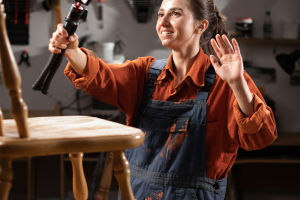Have you ever looked at a woven basket or a cozy handmade scarf and wondered, "How do people actually make that?"
Well, we're about to unravel the secret thread by thread! Weaving is one of humanity's oldest crafts, filled with creativity and tradition.
Whether we're beginners or seasoned crafters, understanding weaving techniques can deepen our appreciation—and maybe even spark a hobby.
Basic Weaving: Where It All Starts
We begin with the most fundamental technique: plain weave. This is where the weft (horizontal threads) passes over and under the warp (vertical threads) in a simple, consistent pattern. Think of this as the ABCs of weaving—strong, balanced, and perfect for things like mats or fabric bases.
Then we have braiding, which isn't just for hair! In weaving, it involves twisting and intertwining strands (like wheat straw or corn husks) without separating warp and weft. This is commonly used in folk crafts to make ropes, trims, or even accessories.
Pattern Weaves: Where Texture and Art Collide
Next, let's talk about pattern weaving. This includes techniques like twill and satin weaves, where the weft thread follows a more complex route. We might spot these patterns on jeans or decorative fabrics. They add texture, diagonal lines, and even a touch of shine.
Some crafts take it further—using basketweave and diamond weave patterns that create repeating textures. These are not only beautiful but also incredibly strong. If we're into decorative home items, this is where things get really fun!
Wrap and Bind: Techniques for Shape and Strength
Now let's explore wrap and bind methods like coiling and knotting. Coiling starts with a core material, often straw or fabric strips, which is wrapped in another fiber and stitched into shape. This is how many baskets or coasters are formed—round, sturdy, and charming.
Knotting is another fantastic technique where threads are tied in patterns. Think of macramé plant hangers or friendship bracelets. The knots don't just look cool—they hold everything together. They're especially useful for decorative and functional crafts.
Join and Stitch: Making One from Many
Weaving often involves joining smaller pieces into a bigger design. There are methods like hand-stitching or machine-stitching to attach strips of woven material. For example, straw braids can be stitched into mats, bags, or even hats. This stage is crucial for shaping and durability.
Some artisans use invisible stitching, making the joins seamless. Others prefer visible stitches as part of the aesthetic. Either way, it's a technique that combines creativity with practicality.
Mixing Styles: The Art of Hybrid Weaving
Many modern weavers blend techniques—for instance, combining knotting with wrapping, or using traditional twill patterns in contemporary decor. This hybrid approach allows us to express our style while honoring the roots of the craft.
Using both thin and thick fibers, switching between tight and loose weaves, or adding dyed materials can create visual interest and dimension. Weaving isn't just functional—it's a full-on art form.
Tools of the Trade
What do we need to start weaving? Two tools stand out: knitting needles (for heavier, larger pieces) and crochet hooks (for delicate, detailed work). Both tools give us control over the fabric's structure, pattern, and stretch.
Other helpful tools include frames, looms, or even basic cardboard for beginners. And of course, our hands are the most important tool of all!
Why We Weave: Beyond Function
Weaving is more than a technique—it's a way to slow down, express ourselves, and connect with tradition. It's an act of patience and imagination. Whether we're making a rug, a wall hanging, or just exploring for fun, weaving offers us a peaceful, hands-on break from screen life.
Let's Keep the Thread Going!
So Lykkers, are your fingers itching to pick up some yarn or straw and give weaving a try? We'd love to hear which technique fascinates you most—plain weave, pattern work, knotting, or a mix of everything? Let's keep the conversation going and maybe inspire each other to create something truly unique. After all, every thread tells a story, and we're all part of the weave.


